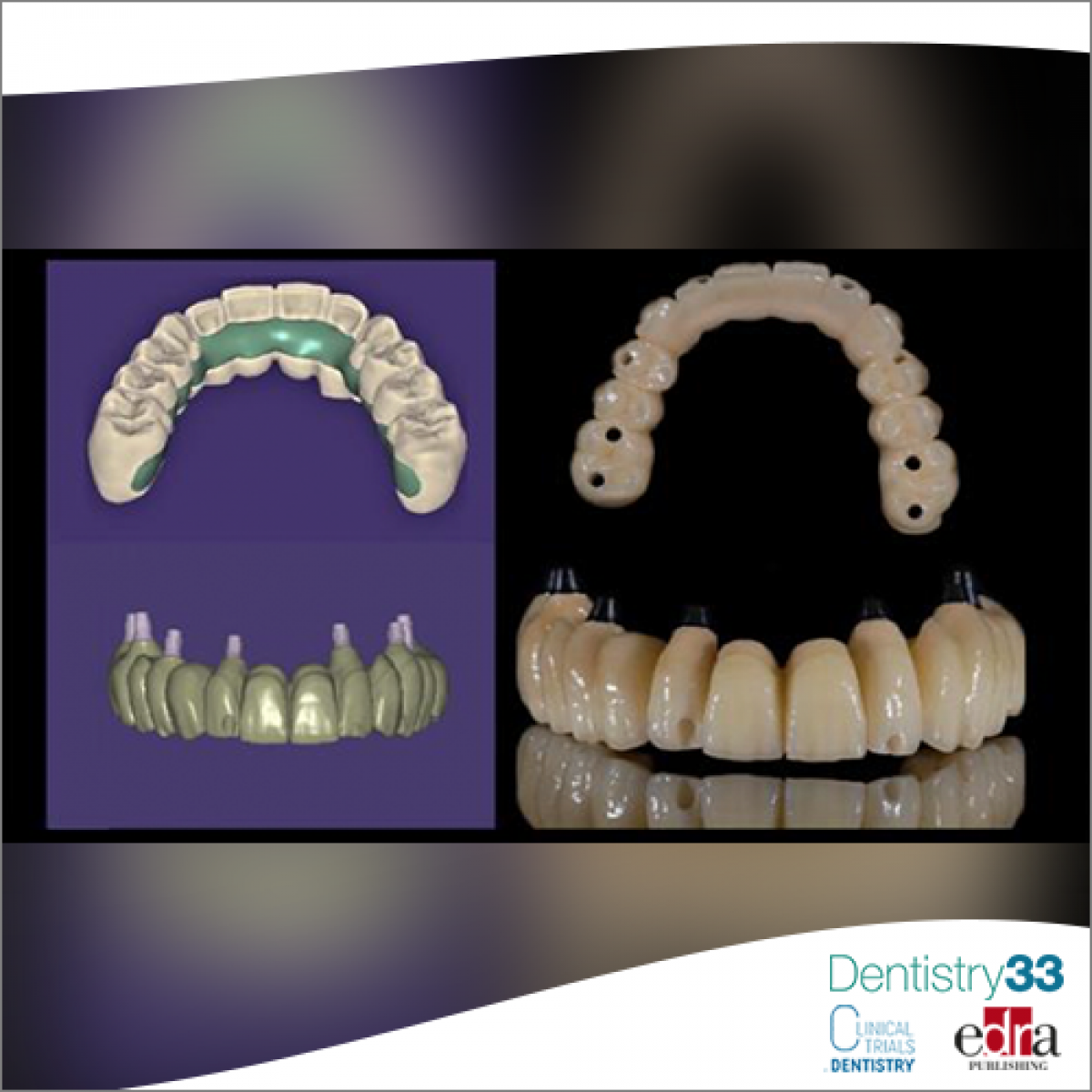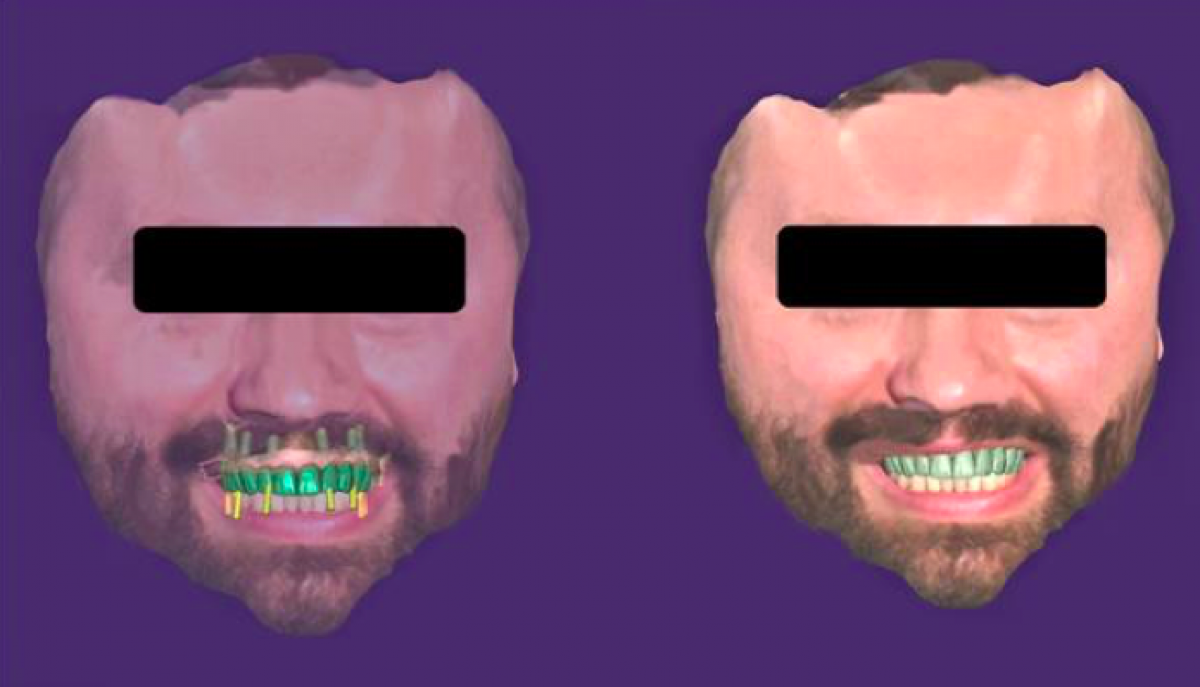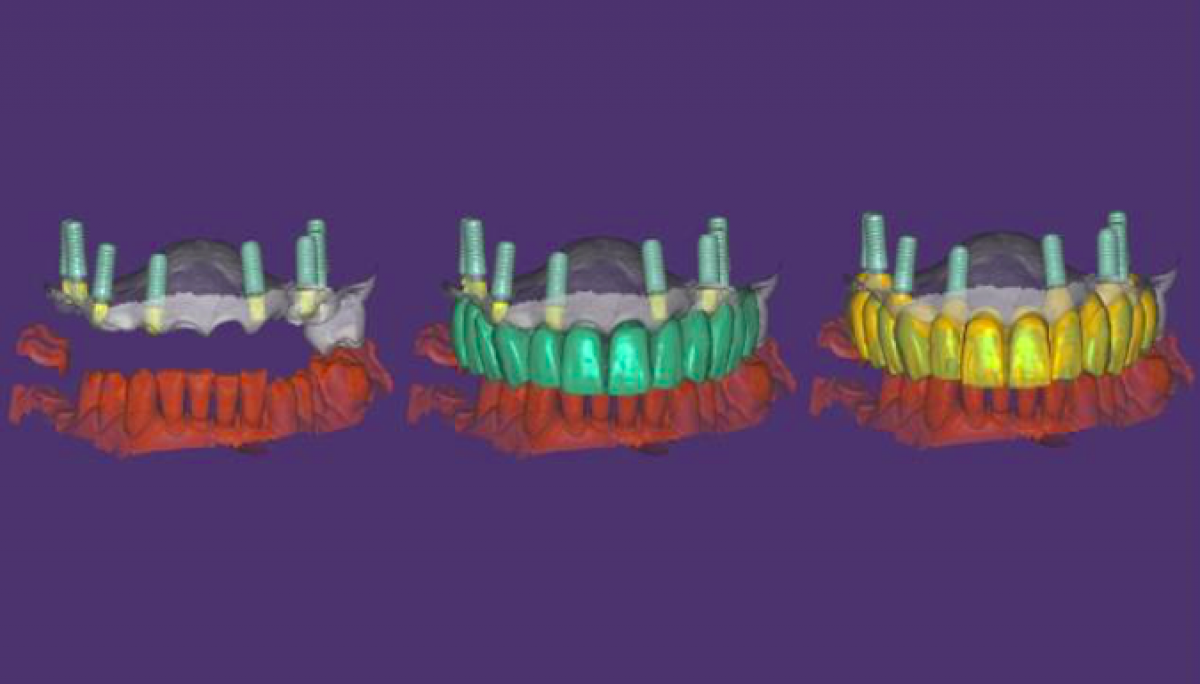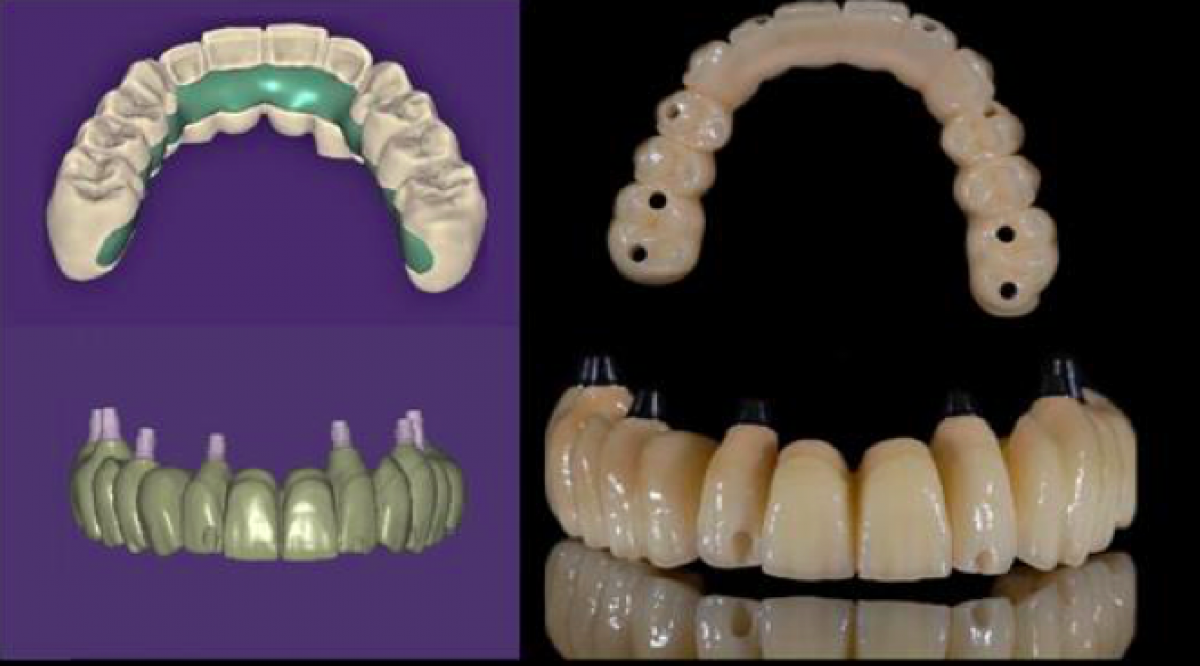
An Innovative Technique for Complete Digital Workflow in Full Arch Implant Rehabilitations
Authors: F. Zingari F. Gallo S. Ghezzi E. Carozzi
The digitalization of the dental field has been recently introduced and has resulted in a significant simplification of clinical procedures. Accuracy of intraoral scanner was improved over the years, but the realignment of the files may be inaccurate, in some clinical conditions, due to the absence of reference points. The aim of this paper is to present an innovative protocol called "files overlapping technique” which allows a simplified complete digital flow in immediate full arch implant rehabilitations.
The introduction of immediate loading in implant dentistry represented a paradigm shift in as it was previously believed that an unloaded period was essential for a successful osseointegration. Dental implants immediate loading techniques have undergone numerous evolutions, over the years, both from a surgical and prosthetic point of view. International literature has irrefutably shown that this technique offers similar results, in terms of implant survival and success rates, compared to early loading implants. A recent literature review study, analyzing 763 references, demonstrated that immediate loading could achieve comparable implant survival rates and marginal bone level changes compared to early loading.
Immediate loading protocols, however, allows the patient's waiting times to be reduced, lowering the discomfort associated with removable temporary prostheses. It was also reported that immediate loaded post-extractive implants were associated, in some cases, with better aesthetic results than conventional loaded implants. There is strong evidence to suggest that immediate loading protocols demonstrate high implant survival rates and could be cautiously recommended for many clinical situations. To this end, implant immediate loading protocols requires considerable skills and knowledge both from the surgeon and prosthodontist.
Implants should have sufficient primary stability to be immediately loaded and the surgeon must know the principles of implant stability and the factors that can influence it in a significant way. We can distinguish factors related to the implant such as implant geometry, implant surface, diameter and length and factors related to the bone site such as preparation type (over or under preparation), site preparation technique (traditional drills, osteotomes, osseodensification technique) and local bone density. The immediate prosthetic phase however, that follows the implant surgery, represents a key step of the whole immediate loading protocol and any mistakes made at this stage can lead to prosthetic or implant failure. It is fundamental to avoid any fracture of the provisional prosthesis because it may result in local overloading. Also, unevenly distributed occlusal contacts may contribute to implant failure and therefore occlusion ought to be evaluated at every occasion, especially during the early phase of healing. In addition, patients restored with immediate full arch rehabilitation need the reconstruction of the occlusal plane and the restoration of the vertical dimension of occlusion. The correct registration of these occlusion parameters represents an essential phase of immediate prosthetic to obtain good aesthetic results for the patient. The multi-unit implant impression, the restoration of the vertical dimension of occlusion and the correct repositioning of the implant analogues in the model are the three basic steps in immediate loading implant protocol that should be carried out with caution and considerable expenditure of time. Last developments in digital dentistry process coupled with the increased precision of new intra-oral scanners, allows now a considerable simplification of prosthesis protocol for immediate full arch implant rehabilitations. Some Authors demonstrated that the digital impression might offer a viable alternative to traditional impressions to manufacture full-arch implant-supported prostheses with satisfactory passive fit. The main goal of the use of this technology, in the field of prosthetic dentistry, is represented by the generation of a complete virtual environment without any physical model. Although there is no doubt about the advantages that digital technology offers in terms of speed of execution and precision in cases of full arch implant rehabilitation, there are still no standardized procedure for obtaining predictable results. To Author’s knowledge, however, the most used digital protocols for immediate full arch restorations involved the creation of a physical master model or a double optical scan to obtain a sufficient precision in fixture-abutment coupling. In particular, the realignment of the files may be inaccurate due to the absence of reference points. If it is a complete digital workflow, the lack of certain reference points inevitably forces the clinicians to a new registration of aesthetic and functional parameters (such as vertical dimension, teeth position, etc) both for the construction of provisional and the definitive prosthesis. In this way, the parameters detected for the construction of the provisional cannot be used in the construction of the definitive unless you go through analog phases or the construction of physical plaster models. The aim of this paper is to show tan innovative protocol called “files overlapping technique” which allows a complete simplified digital workflow for full arch post-extractive implant rehabilitation cases.
Materials and Methods
Twelve patients were treated with one or more immediate loading full arch implant rehabilitations following the proposed technique of overlapping files. Each patient, needing the implant rehabilitation of an entire arch, received several titanium dental implants ranged from 4 to 9 (for one arch). Ninenty-seven implants were inserted (Table 1). This innovative protocol requires at least three residual and sufficiently stable dental elements. A plaster model was created for each patient, to verify the accuracy of the proposed technique. Implant transfers were screwed onto the fixtures and subsequently splinted by rigid plexiglass plate and resin. The plexiglass plate was removed from the oral cavity of the patient and the analogues were screwed onto the transfers. A plaster model with implant analogues in it was created. This model will be used only to verify the precision of the digital impression. In all cases, rotative abutments were positioned and cemented to the provisional prosthesis with dual core adhesive (DTK, Bredent, Italy) In all cases, the immediate prosthesis was made of stratified PMMa. This material was preferred to others because of his physical properties. It shows flexural strength greater than 100 Mpa and an elastic modulus greater than 2200 MPa. It was assessed that it be left in the oral cavity, without undergoing substantial modifications, for two years. Through a questionnaire, delivered at the beginning of treatment, the patient was asked the degree of appreciation of the entire digital protocol.
Conclusion
The protocol presented allows to realize a full post extractive implant rehabilitation with immediate loading using a complete digital workflow. The use of the pilot provisional allows to obtain aesthetic and functional information before the day of surgery. Clinical studies with longer follow-up are needed to better evaluate the potential of the files overlapping technique.
 Related articles
Related articles
Emergence of advanced digital technology has opened up new perspectives for design and production in the field of dentistry.
 Read more
Read more
Editorials 10 October 2025
With proud smiles and crisp white coats, ninety-three learners from the DDS Class of 2029 and the International Dentist Pathway Class of 2028 marked the start of their dental careers at the UCSF...
Periodontology 10 October 2025
Continuous professional development (CPD) in Periodontology refers to the overall framework of opportunities that facilitate a life-long learning practice, driven by the learner-practitioner and...
TheraBreath, the #1 alcohol-free mouthwash brand in the U.S.*, has introduced a new line of dentist-formulated, clinically tested toothpastes designed to support professional oral care...
News 10 October 2025
New officers and trustees were installed at the Minnesota Dental Association’s Leadership Conference on September 19 in Minneapolis.
News 10 October 2025
Smartee Denti-Technology today announced that Professor Gang Shen, its Chief Scientist and Executive President of TaiKang ByBo Dental, has once again been named to the World’s Top 2% Scientists...














